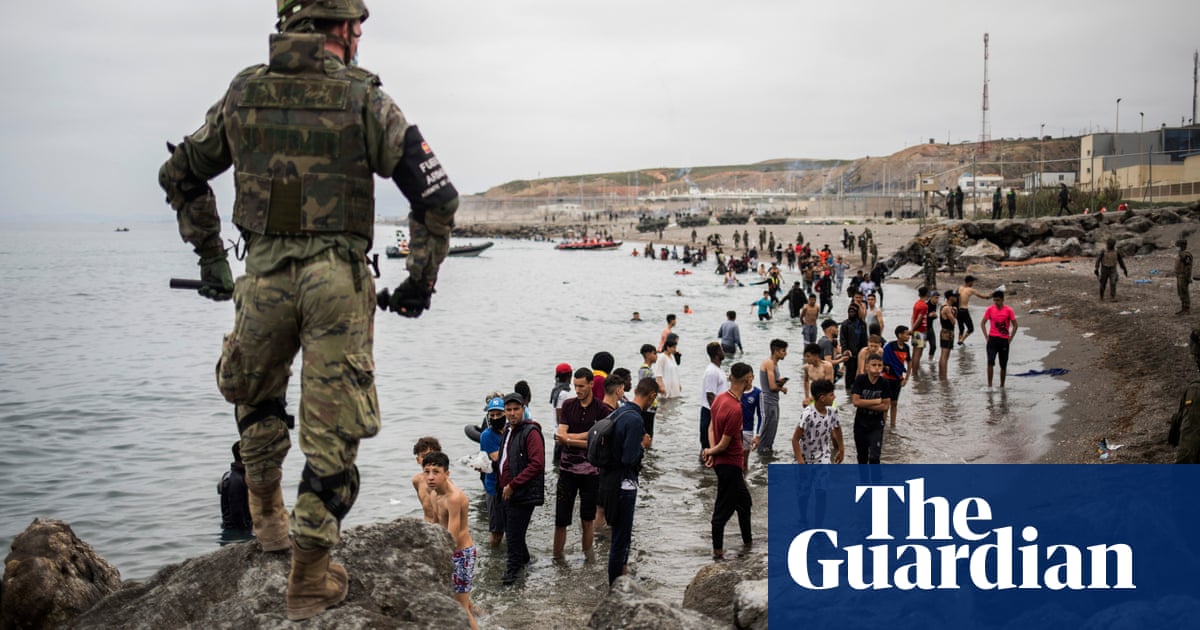A refugee who was almost blinded in one eye during a police operation that ended with the deaths of at least 14 people off the coast of Spain’s north African enclave of Ceuta 11 years ago has filed a complaint to the UN Committee Against Torture.
Shortly before dawn on 6 February 2014, about 200 people tried to enter Ceuta by climbing the border fence or by swimming around the breakwater that separates the city from Moroccan territory.
Officers from Spain’s Guardia Civil police force used anti-riot equipment including 145 rubber bullets and five smoke canisters to repel the migrants and refugees, creating panic among those in the water off Tarajal beach.
Fourteen people were confirmed to have drowned that day, and survivors and NGOs believe the true death toll was far higher. Another 23 people were sent back to Morocco.
On Thursday, one of the survivors, known as Brice O, filed a complaint with the UN committee over Spain’s failure to investigate the use of the anti-riot equipment at the beach.
“I find it incredibly dangerous that rubber bullets are being used,” said Brice O, who left his native Cameroon as an unaccompanied minor and spent years living in the Moroccan forests near Spain’s other north African enclave, Melilla. “I bear witness as someone disabled in one eye because of a rubber bullet.”
The survivor said something hit his eye as he made for the beach in the inner tube of a tyre, and that he was left choking and gasping for air as projectiles hit the water around him.
“Suddenly I felt an intense pain in my face, on my left side, a pain in the eye area,” he said. “I managed to get out of the water but I was really struggling to breathe.”
Brice O, who was later recognised as a refugee by the office of the United Nations high commissioner for refugees, eventually relocated from Morocco to Canada, where he is studying cinematography and film production.
Spain’s then interior minister, Jorge Fernández Díaz, said officers fired rubber bullets “at the water, not at people”, and denied that the actions of the police played any role in the deaths.
Repeated attempts to secure justice for the victims have proved fruitless. In October 2015, a judge dismissed the case against 16 Guardia Civil officers in connection with the incident, ruling that while there was no protocol covering the use of anti-riot equipment in “a water-based environment”, the officers had been forced to use the materials in the course of their duties.
The case was officially shelved by the supreme court almost three years ago.
Hanaa Hakiki, the director of the border justice team at the European Center for Constitutional and Human Rights, described the Tarajal investigation as a farce, adding: “There was no real legal assessment of the force used by the Guardia Civil. The last 11 years have been a disgrace and Spain must fully investigate this deadly border operation.”
A separate appeal brought on behalf of other victims and their relatives by a group of Spanish NGOs – including the Spanish Commission for Refugees (CEAR), the Human Rights Association of Spain (APDHE) and the Coordinadora de Barrios – is pending at Spain’s constitutional court.
Elena Muñoz, of the CEAR, said the protection of migrants’ right to life at borders needed to be established “so that these terrible events do not recur and so that families finally have access to truth, justice and reparation”.
Questions over the policing of Spain’s borders intensified in June 2022 when at least 37 people died during a mass storming of the border fence between Morocco and Melilla.
Amnesty International said the “widespread use of unlawful force” by Moroccan and Spanish authorities contributed to the fatalities, while a UN working group of experts described the deaths as evidence of the “racialised exclusion and deadly violence deployed to keep out people of African and Middle Eastern descent”.
Maite Daniela Lo Coco, a migration coordinator for the human rights group Irídia, said the Spanish-Moroccan border had been the site of human rights violations for decades.
She said: “Both the operations at El Tarajal in 2014 and on 24 June 2022 in Melilla show how the indiscriminate use of anti-riot material, pushbacks, the claim of exceptionality and lack of effective investigations combine to create life-threatening situations causing deaths of Black people at the border.”
The interior ministry said it had no comment to make regarding the complaint.











